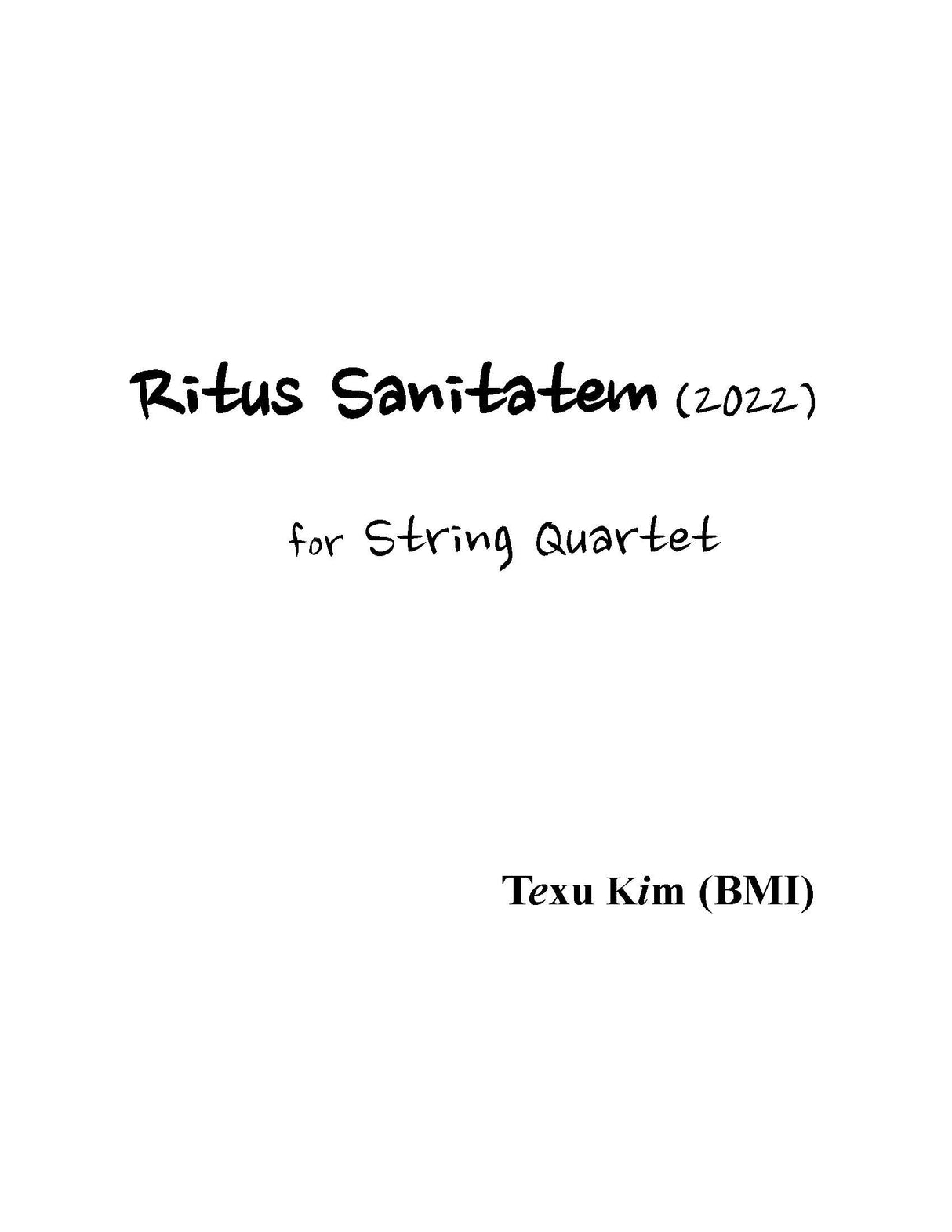T. Kim: Ritus Sanitatem
Expected to ship in about a week.
- Composer: Texu Kim (1980-)
- Format: Score & Set of Parts
- Instrumentation: String Quartet (Violin I, Violin II, Viola, Cello)
- Work: Ritus Sanitatem (2022)
- Size: 8.5 x 11.0 inches
Description
Program Notes
Music has been believed to help maintain and restore mental and physical health at various times and in various cultures. One of the more exemplary instances would be the Korean shamanic healing ritual, Byung-gut. in this practice, a shaman (ordinarily female) dances, recites, chants, and sings, interacting with a small instrumental ensemble. Here, music plays a central role.
Ritus Sanitatem ("rite of healing," translated from Latin) for string quartet is a journey through several Korean folk-healing traditions in three movements. The first movement is inspired by the inscription of talismans, which I associate with chanting, one of the oldest practices of using music as medicine in diverse cultures, like in ancient Sanskrit chants of Samaveda.
The second movement addresses acupuncture in that it begins with a-sharp pain (related to the injection of needles, though one is not supposed to feel any pain if it is done very well) that eventually gives relief and recovery. The concept of healing by hurting can be found in numerous medical methods and traditions, including modern-day vaccination and crucifixes. Music plays a significant role in the Korean shaman ritual gut. (Byung-gut is one of its many types.) While exuberant rhythm comes to the fore, like in other shaman music, melodic content is also considered essential in the gut. My piece's finale exhibits these characteristics and a quotation of the gut, interwoven with passages that would sound like tarantella, a psychedelic music and dance genre used to treat tarantism in 15th- to 17th- century Italy.
I hope this 17-minute rite gives the audience a chance to reflect on the role of music as medicine, especially after what the world went through in the last couple of years.
Publishers use a lot of words to describe what they sell, and we know it can be confusing. We've tried to be as clear as possible to make sure you get exactly what you are looking for. Below are descriptions of the terms that we use to describe the various formats that music often comes in.
Choral Score
A score for vocalists that only contains the vocal lines. The instrumental parts are not there for reference. Generally, cheaper than a vocal score and requires multiple copies for purchase.
Facsimile
Reproductions of the original hand-written scores from the composer.
Full Score
For ensemble music, this indicates that the edition contains all parts on a single system (there are not separate parts for each player). In larger ensembles, this is for the conductor.
Hardcover
Hardbound. Generally either linen-covered or half-leather.
Orchestral Parts
Similar to a wind set, this is a collection of parts. In the case of strings, the numbers listed are the number of copies included, though generally these are available individually (often with minimum quantities required).
Paperback
When publishers offer multiple bindings (e.g. hardcover) or study scores, this is the "standard" version. If you're planning to play the music, this is probably what you want.
Performance / Playing Score
A score of the music containing all parts on one system, intended for players to share. There are not separate parts for each player.
Set of Parts
For ensemble music, this indicates that there are separate individual parts for each player.
Solo Part with Piano Reduction
For solo pieces with orchestra, this is a version that contains a piano reduction of the orchestra parts. For piano pieces, two copies are typically needed for performance.
Study Score
A small (think choral size) copy of the complete score meant for studying, and not playing. They make great add-ons when learning concertos and small chamber works.
Vocal Score
A score prepared for vocalists that includes the piano/organ part or a reduction of the instrumental parts.
Wind Set
For orchestral music, this is a collection of wind and percussion parts. The specific quantities of each instrument are notated.
With Audio
In addition to the printed music, the edition contains recordings of the pieces. This may be an included CD, or access to files on the internet.
With / Without Fingering (Markings)
Some publishers prepare two copies - a pure Urtext edition that includes no fingering (or bowing) suggestions and a lightly edited version that includes a minimal number of editorial markings.


